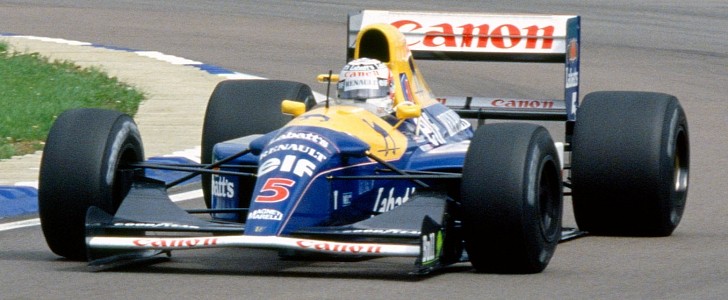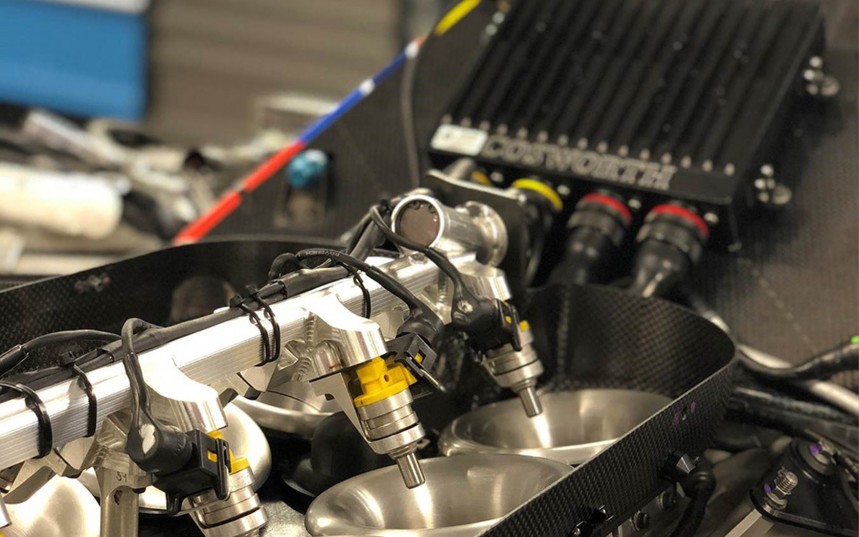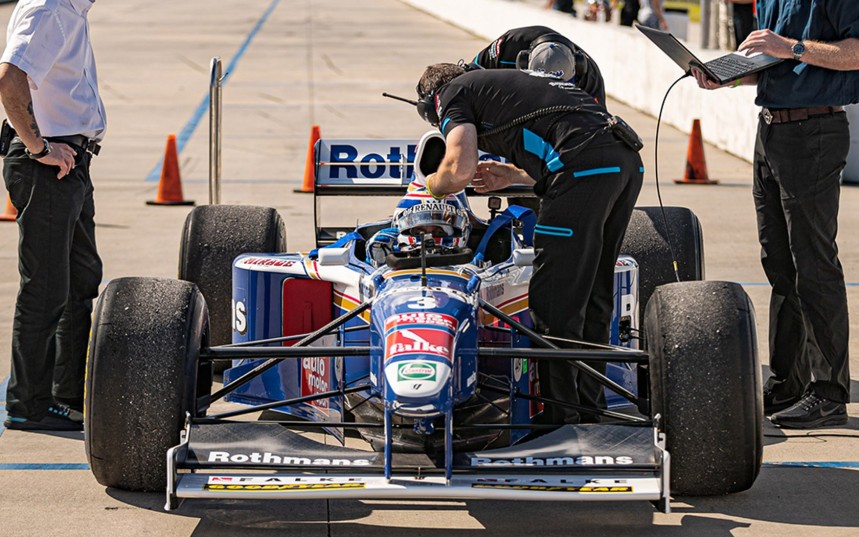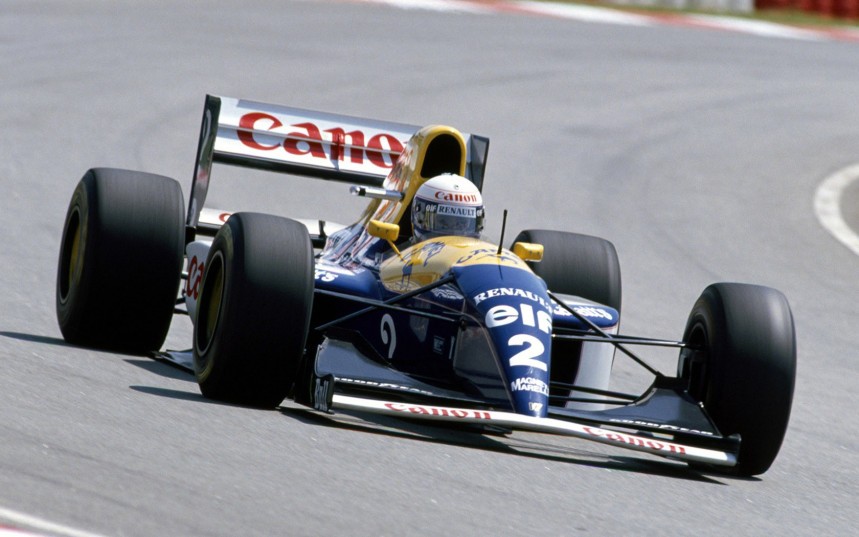Behind Ferrari and Mercedes, Cosworth is the third most successful engine manufacturer in the history of Formula One, and although it currently isn’t involved in the competition, the engineering company is using its invaluable experience to help revive some of the most successful F1 cars of the nineties.
In recent years, the electronics division at Cosworth together with Williams Heritage, the restoration division of the famed F1 team, have been working closely to restore some of the team’s most prized possessions.
Apart from the technical know-how, they provided cutting-edge engineering solutions that have enabled the iconic vehicles to be fired up and driven on the track once more.
To achieve such a feat, the first step was to reverse engineer the electronics on each of the cars to work with Cosworth’s latest race-spec engine control unit, the MQ12Di.
It features a powerful new logging system, based on the Omega L2, which offers high bandwidth logging of ECU data across a dual-port RAM device, along with a large data storage capacity.
The arduous process began by using the Pi Autosim tool to test and review each of the four Renault engines’ hardware. Once that was done, Cosworth engineers generated a base map of the units and carried out a full calibration.
Next, the team moved to the chassis, integrating complex assemblies such as the hydraulic suspension system or gearbox into the new system.
Working alongside professionals who have been designing F1 control units for the past three decades, the engineers managed to crack each car’s original control module and gain full access to their electronics.
This means that the cars are can now be fired up and driven, with the original dashes, displays, and every single switch being fully functional.
The first car that benefited from Cosworth’s expertise is the Williams FW14B driven by Nigel Mansell in 1992. He won nine out of the sixteen races that season and managed to climb the podium twice on the way to his only Drivers' Championship trophy.
The FW14B is powered by a Renault RS4 3.5-liter (213.2 cu in) naturally aspirated V10 and features the first version of Williams’ innovative active suspension systems.
After this project was completed, the team of engineers began work on its successor, the FW15C driven to glory in 1993 by legendary French driver Alain Prost. The Frenchman won his fourth and final Drivers’ title after a hard-fought battle against former teammate, the legendary Ayrton Senna.
Restoring its electronics was by far the toughest task for Cosworth engineers as it features so many intricate systems. To this day, it is considered one of the most technologically sophisticated Formula 1 cars of all time, incorporating anti-lock brakes, traction control, active suspension, and semi-automatic transmission.
The other two cars brought back to life by Cosworth’s hardware and expertise are the FW17 driven in the 1995 season by Damon Hill and the FW19 that helped Jacques Villeneuve secure his only Drivers’ Championship in 1996 after an epic battle with Michael Schumacher.
These daring projects have not only showcased Cosworth’s capability but also given younger fans the opportunity to see the legendary cars in mint condition and experience the breathtaking growl of their iconic V10 at Williams Heritage events.
Apart from the technical know-how, they provided cutting-edge engineering solutions that have enabled the iconic vehicles to be fired up and driven on the track once more.
To achieve such a feat, the first step was to reverse engineer the electronics on each of the cars to work with Cosworth’s latest race-spec engine control unit, the MQ12Di.
The arduous process began by using the Pi Autosim tool to test and review each of the four Renault engines’ hardware. Once that was done, Cosworth engineers generated a base map of the units and carried out a full calibration.
Next, the team moved to the chassis, integrating complex assemblies such as the hydraulic suspension system or gearbox into the new system.
Working alongside professionals who have been designing F1 control units for the past three decades, the engineers managed to crack each car’s original control module and gain full access to their electronics.
The first car that benefited from Cosworth’s expertise is the Williams FW14B driven by Nigel Mansell in 1992. He won nine out of the sixteen races that season and managed to climb the podium twice on the way to his only Drivers' Championship trophy.
The FW14B is powered by a Renault RS4 3.5-liter (213.2 cu in) naturally aspirated V10 and features the first version of Williams’ innovative active suspension systems.
After this project was completed, the team of engineers began work on its successor, the FW15C driven to glory in 1993 by legendary French driver Alain Prost. The Frenchman won his fourth and final Drivers’ title after a hard-fought battle against former teammate, the legendary Ayrton Senna.
The other two cars brought back to life by Cosworth’s hardware and expertise are the FW17 driven in the 1995 season by Damon Hill and the FW19 that helped Jacques Villeneuve secure his only Drivers’ Championship in 1996 after an epic battle with Michael Schumacher.
These daring projects have not only showcased Cosworth’s capability but also given younger fans the opportunity to see the legendary cars in mint condition and experience the breathtaking growl of their iconic V10 at Williams Heritage events.











